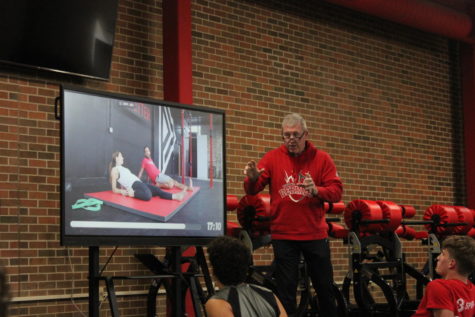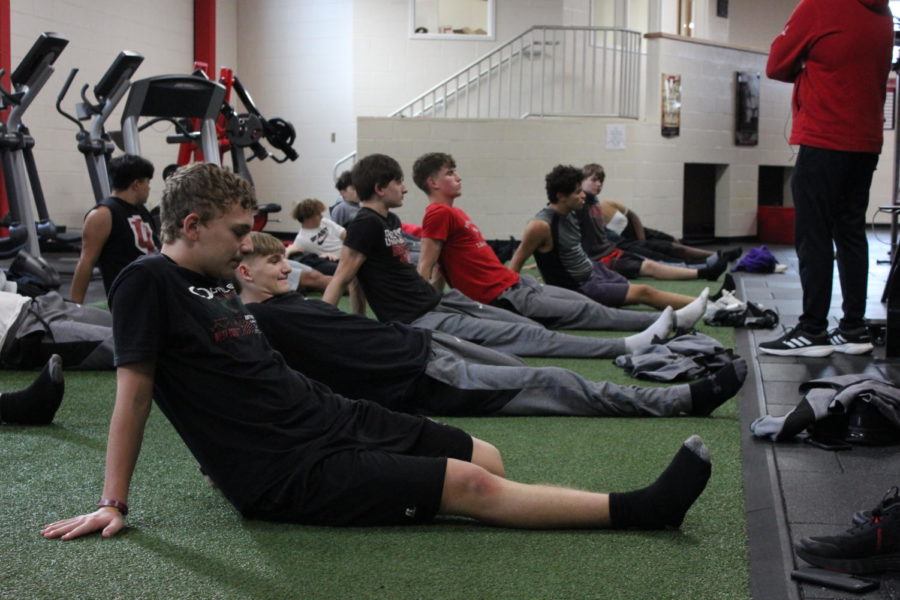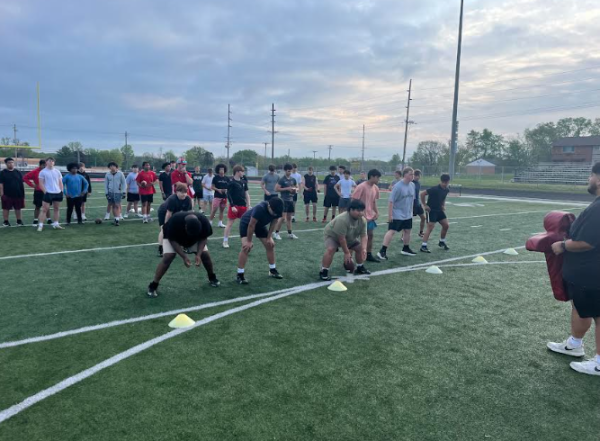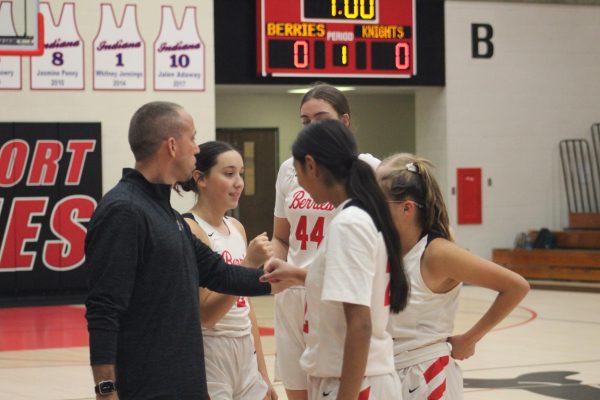Column: The Importance of Stretching for Athletes
A group of athletes concentrate on holding the half saddle stretch in weights.
It’s crucial that athletes take stretching seriously because it has numerous advantages. Any athlete who wishes to improve their performance must incorporate stretching into their daily regimen.
Although stretching is typically done at the start and end of any practice, many times young athletes are unaware of its significance. They might cut stretches short for breaks in order to get into play faster, or they might use it to catch up with teammates. All athletes, regardless of the sport they play, should take the time to stretch properly. Young athletes should grasp the value of stretching.
“As a baseball player, we take stretching very seriously before every practice,” senior Kaiden Lucero said. “Before every practice or game, the entire team forms a large circle in the center field and performs the same stretches to get our bodies ready. It is simple to merely go through the motions and have a good conversation with your teammates instead of focusing on the stretches. When I didn’t stretch correctly before a game, I took off running after I hit the ball and strained my hamstring because my muscles were so tight.”
While many athletes may know the significance of stretching, they might not know how or when it should be done. A lot of athletes only stretch when their coaches have them in their routine before a practice or game.
“I personally believe in stretching before and after a workout and throughout your day to help stay loose and agile, so that your muscles can function at their best capacity, without fear of injury or without tightening up making it harder to do movements,” athletic trainer Sydney Latham said. “It all depends on the stretch, but I typically have athletes perform most of my stretches for rounds of 3-5 for 15 to 30 seconds.”
Even though stretching is beneficial, it is important to realize that you can overdo it. Athletes know their own bodies, and they have to notice when they have done enough stretching.
“The only untechnical disadvantage I am aware of with stretching is that certain athletes may be so sore that they may overextend specific body parts by extending for an excessive amount of time, which could result in an injury,” Latham said.
Stretching is a tool that can promote athletic growth regardless of the type of background that athlete comes from.

“I emphasize to the boys in the high school weightlifting class how crucial it is to look after your bodies,” head football coach Mike Johnson said. “The first two days of the week are spent on heavy lifting, and Wednesday is immediately followed by a mobility workout. I advise them to stretch on their own time because many of them will still be sore on Wednesday. Less weight and fewer reps are used on the final two days of the week so that there would be time for stretching after their workouts.”
You should be able to hold a stretch in a passive position for as long as possible so that you can feel the stretch but not to the point where it hurts.
“Some athletes are more flexible than others, and I let them know that they have to be in control of what they can do in certain stretches,” Johnson said. “Stretching is all about trying to recover from all the hard work you put in, and it is a part of what makes an athlete perform better.
After all is said and done, stretching can sometimes be forgotten as a practice for athletes. For all of the athletes out there, stretch as much as you can.
Your donation will support the student journalists of Logansport High School. Your contribution will allow us to purchase equipment and cover our annual website hosting costs.

Senior Jeremiah Miller is a new member of the Logansport High School Magpie. On the staff, he mainly covers sports/opinion articles. One thing he loves...

Senior Vasan Nomany is a team leader, photographer, and former Captions Editor for the Magpie. This is Vasan’s third and final year on staff. Vasan is...






